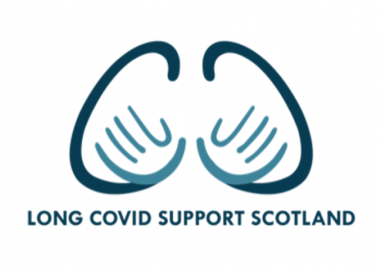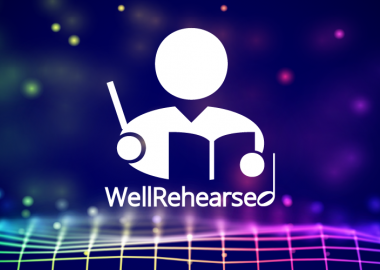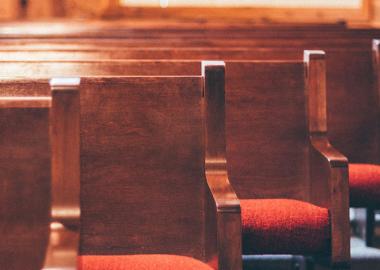Jonathan Gillams, chairman of promoter group Radlett Music Club, tells us about their experience hosting an interactive Zoom concert.
Background: What our organisation looked like before coronavirus
Number of concerts per year: Six
Season dates: October to April
Ticket prices and cost of any membership subscriptions: £16; £65 for all six concerts
Average audience size: 85
Regular venue and its capacity: The Radlett Centre; 300
Number of people on our organising committee and how often it met: Five people; four times a year
Our initial reaction to lockdown when it happened in March
We made the mutual decision to cancel one concert with the artist on the grounds that the pandemic had legally frustrated it, while artists withdrew from a second event we had planned. We intend to rebook these artists, but have nothing confirmed yet. We communicated this news via email (to 90% of our audience) and letter (to 10% of our audience). No door sales had been made at the time we cancelled, so no refunds were issued. We had planned to organise two free replacement member concerts to save our treasurer work with refunds.
"Overall, we wanted to maintain the social element of going to concerts and them being a special live event – it is not just about hearing the music, which is, after all, available anytime on YouTube."
Starting to plan ahead
Our club has been suffering from falling membership for a number of years, so, in 2019, we conducted a simple survey to find out what people liked and disliked about the club. The top three likes were high quality performances, the locality of the club (vs going into London) and meeting friends. We also found out the most popular concerts were solo piano and string quartets. There weren’t any strong dislikes. Most of our members are elderly and many have been self-isolating for much of this year, so it seemed that a Zoom concert, where members could at least see each other again, was a good idea.
YouTube was a possibility, but we wanted to make the concerts as live as possible, and there is a lot of competition with better technical resources in this area. So we favoured Zoom, which a couple of us had used quite a lot for lectures and band rehearsals rather than concerts. In April, we held a demo piano concert on Zoom for committee members only, but it went badly. Poor audio quality and internet speed were the main issues. We were initially put off hosting another by this demo, but Making Music technical webinars and our experience with Zoom band rehearsals encouraged us to try again.
We went ahead with the virtual concert to keep club members engaged and to compensate for cancelled events. At first, we wondered whether the broadcast quality would be good enough, so we ended up choosing an artist with previous experience of a Zoom performance. We did not survey our audience to ask how they felt about an online concert, but our Zoom AGM was well attended, thus demonstrating our members' willingness to try out technology. For email comms, we use Mailchimp, which allows us to get a feel for how well emails are received with the number of opens and click-throughs.

Ironing out online concert details
On 12 September, we confirmed we were going to put on an online concert and began planning the details, which was led by our usual concert manager. One group member had extensive experience of using Zoom for online meetings and presentations, and I had used Zoom for brass band rehearsals (for which Making Music’s technical input was again crucial). The artist took care of the venue, piano, microphones and lighting to improve the quality of the broadcast, although he was initially going to perform at home. Given the event was in large part a replacement for the cancelled concerts which members had already paid for, we did not charge for the online performance.
On the night, we set up a Zoom meeting and invited the artist to join, with one of our committee acting as event manager so we could maintain control of the event. The chairman made his usual introduction before we then passed the event over to the artist, who spoke at length ahead of each piece. We welcomed some individuals as they joined, but it did get a bit chaotic and we developed a feedback loop. After the performance, we opened the event to all for a vote of thanks, round of applause and Q&A session.
Gathering an audience
We normally mail and hand out posters and leaflets to publicise our events, with a last-minute email reminder and printed programme. For the online concert, we sent an email round to let people know how it would be different, including a one-page concert programme with links to the artist and more details on our website. As this was a replacement concert for members only, we did not publicise it widely, though we did invite members from our neighbouring club, Octagon, in Watford. For those who had less experience with technology, we provided a one-page set of Zoom instructions (though this possibly made it seem unnecessarily complicated) and a phone-in option.
"We always encourage our artists to talk about what they are playing in order to give our concerts a unique feel, and on Zoom both did this very well, although one did remark that speaking to a camera in an empty room was a bit strange."
What we learned
Despite this being the first virtual concert we put on during the pandemic, we received good engagement, with 40 logins and 60 attendees in total. People were pleased to see each other again, and there were no technical issues. The artist spoke directly to the audience and gave a personalised and intimate feel to the event. In terms of improvements to be made, preparation could have gone smoother, as 40 microphones all turned on at once created a feedback loop and distorted audio. For other promoter groups looking to use Zoom for an online concert, these would be my three top tips:
1. Hold a sound/lighting/camera/Wi-Fi check well in advance of, and again immediately before, the concert.
2. Suggest the audience listen via a standalone speaker such as Ultimate Ears or a TV rather than through their computer speakers for improved audio.
3. Consider using breakout rooms to allow more audience participation.
Overall, we wanted to maintain the social element of going to concerts and them being a special live event – it is not just about hearing the music, which is, after all, available anytime on YouTube. Looking ahead, we hope to continue developing the format using OBS and more than one camera and microphone, perhaps offering it as an alternative (for the more vulnerable) to attending future socially distanced concerts in person.
We always encourage our artists to talk about what they are playing in order to give our concerts a unique feel. After the success of our first online concert, we organised another with harpist Elizabeth Bass, a Philip & Dorothy Green Young Artist 2020, which was of an equally high standard and again well attended. On Zoom, the artists from both concerts spoke very well about their pieces, although one did remark that talking to a camera in an empty room was a bit strange.
We are now trying to organize a further two Zoom concerts for next year and have had some interesting feedback from one of our members, who is a professional pianist. She has used both Facebook Live and Zoom for concerts and has found Zoom more tolerant of external microphones, as Facebook compresses the sound and lowers audio quality, though she is unsure whether this is dynamic range or frequency truncation.
Note: Radlett Music Club's concert contained music out of copyright, so the group did not pay any PRS fees. If you are putting on a performance with music in copyright, you will need a PRS licence. Find out more in our copyright resource.
We hope you find this Making Music resource useful. If you have any comments or suggestions about the guidance please contact us. Whilst every effort is made to ensure that the content of this guidance is accurate and up to date, Making Music do not warrant, nor accept any liability or responsibility for the completeness or accuracy of the content, or for any loss which may arise from reliance on the information contained in it.










